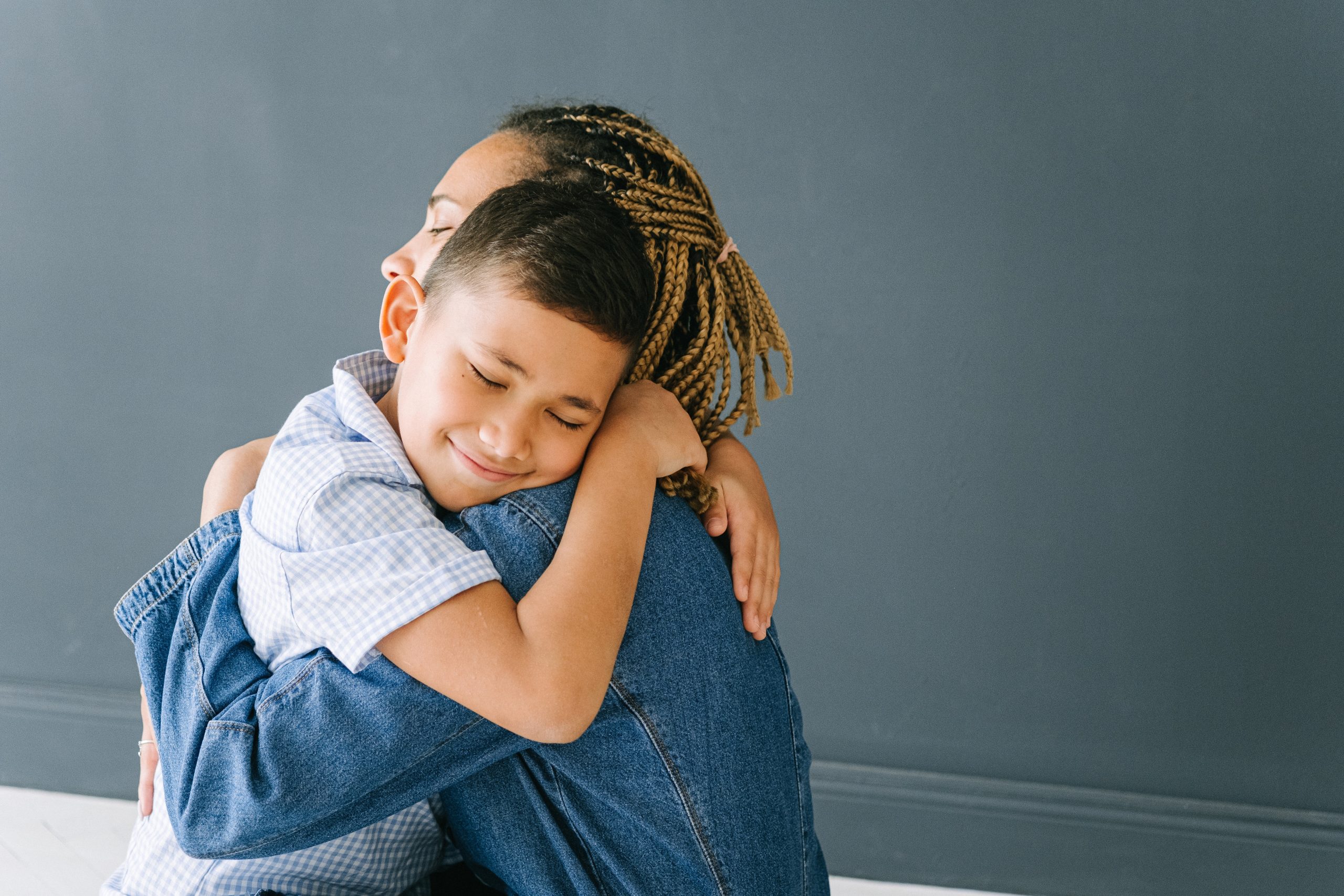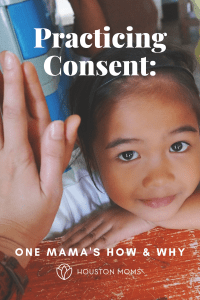When my partner and I first found out we were pregnant, I got a little wild like most first-time mothers do, and dived headfirst into all things baby: planning our nursery theme, picking out favorite names, buying childhood favorite books to build baby’s collection, and the list goes on. Preparing for motherhood surely includes all of that, but I also knew it couldn’t just end there, in all the cutesy baby items. As this babe grew in my belly, so grew a deep desire to always do right by my child. This is where my consent parenting journey first began, the determination to protect my child at all costs and from all potential harm {blame my mama-bear heart on my Enneagram 8-ness, y’all}.
The HOW: Practicing Consent
Voice And Choice
Our son quickly started developing his own personality and voice. Practicing consent, for us, started here: the recognition that our son is his own person and deserves to be respected as such. Much to the grandparents’ dismay, this also meant letting him choose whether or not and how he wanted physical affection at different times. We especially try not to force affection, but rather let him choose if and how he wants to show affection, i.e. a hug, a kiss on the cheek, a high five, or a wave from afar. Culturally, it’s still hard to wrap our minds around sometimes, since Latinx people are very warm and touchy in that sense. I personally have had countless conversations with my very-Latina-very-old-school mother about our boundaries around consent, which isn’t ever easy.
Similarly, we respect his “no.” If he says no to being tickled, we stop. If he insists he doesn’t need to potty, we trust him to listen to his body. In turn, that has also meant that he must respect our “no.” Sometimes that sounds like, “Mami doesn’t want to play that right now, but we could play this instead.” Or “Mami and Papi are talking right now, but if you give us just 2 minutes, we’ll play with you then.” These are harder for him, understandably, but we practice nonetheless.
Body Part Names
 We never did cutesy names for private parts, even when he was a baby. His penis has always been a penis, never a wee-wee, weenie, willy, or anything of the sort. He knows Mami has different private parts than Papi and he does. Everyone who has cared for him in any capacity was always encouraged to use the correct names of everything. Elbows are never called anything other than an elbow, and our private parts should follow the same pattern. God forbid, if anything were to ever happen to him, the correct anatomical names of his private parts will empower him and his voice.
We never did cutesy names for private parts, even when he was a baby. His penis has always been a penis, never a wee-wee, weenie, willy, or anything of the sort. He knows Mami has different private parts than Papi and he does. Everyone who has cared for him in any capacity was always encouraged to use the correct names of everything. Elbows are never called anything other than an elbow, and our private parts should follow the same pattern. God forbid, if anything were to ever happen to him, the correct anatomical names of his private parts will empower him and his voice.
Safe Touch
The way we’ve explained safe touch is a touch that makes you feel good, like a friendly hug or a high five. He knows safe touch does not include his private parts, that no one else is allowed to touch them, apart from Mami, Papi, and other caretakers when we are bathing him to keep him healthy. This is one we are still just beginning to talk about, since he is about 3.5 years old. We are reading books about touch, we bring up hypothetical situations during undressing/dressing and bath time, we make sure it is something we always come back to and practice over and over again.
The WHY: Practicing Consent
 We raise our son in a consent-practicing home to protect women. In our society, we raise our daughters, showing them how to protect themselves and how to avoid dangerous situations we know they could one day find themselves in as adult women. I definitely was overprotected in this sense, growing up in a conservative Latinx family. I was a pre-teen when I first asked myself, “Just who are they trying to protect me from?” I was a teenager when life answered, “Men, Liz. Men.” See, instead of desperately trying to protect our daughters, we need to be better about raising our sons to believe women are full human beings in and of themselves, that as such, her voice and particularly her “no” are worthy of dignity and honor.
We raise our son in a consent-practicing home to protect women. In our society, we raise our daughters, showing them how to protect themselves and how to avoid dangerous situations we know they could one day find themselves in as adult women. I definitely was overprotected in this sense, growing up in a conservative Latinx family. I was a pre-teen when I first asked myself, “Just who are they trying to protect me from?” I was a teenager when life answered, “Men, Liz. Men.” See, instead of desperately trying to protect our daughters, we need to be better about raising our sons to believe women are full human beings in and of themselves, that as such, her voice and particularly her “no” are worthy of dignity and honor.
We raise our son in a consent-practicing home to protect him. If I sit and think about all the evil in the world, so much of it unknown to our little ones, I could cry for hours. As a former teacher for five years, I’ve seen some of it much closer than I have ever wanted to. Pretending it’s not out there only does more harm than good. Raising our son the way we are, practicing consent in many different ways, teaching him his voice matters, has not always been easy, but we know it is the best thing for him. For that reason, we press on.
 Disclaimer #1: Most everything I have learned on this journey has been because of Rosalia Rivera {IG: @consentparenting} and the wonderful work she does through social media, workshops, trainings, and more. She has been, for me, one of the most important parenting experts to follow and learn from.
Disclaimer #1: Most everything I have learned on this journey has been because of Rosalia Rivera {IG: @consentparenting} and the wonderful work she does through social media, workshops, trainings, and more. She has been, for me, one of the most important parenting experts to follow and learn from.
Disclaimer #2: This is NOT intended to be an exhaustive resource for all things consent parenting. This is instead a fellow mother’s plea to consider practicing consent, for the sake of our children and their well-being and future. I myself am still learning, aware that practicing consent will look different as our son moves through life stages. I only want us all to be in that learning together.














